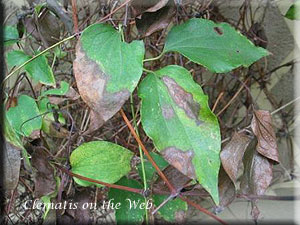Evergreen Trees: A Guide to Trees That Don’t Lose Their Leaves
Trees are a vital part of our ecosystem, providing oxygen, absorbing carbon dioxide, and helping to regulate the climate. While most trees lose their leaves in the fall, there are some that retain their foliage year-round. These evergreen trees are found in various parts of the world and have unique adaptations that allow them to survive in harsh environments.

One example of a tree that doesn’t lose its leaves is the pine tree. Pines are evergreen conifers that are found in many parts of the world, including North America, Europe, and Asia. They have needle-like leaves that are covered in a waxy coating to help prevent water loss. This adaptation allows them to survive in areas with low rainfall and harsh winters.
Another example of an evergreen tree is the live oak. Live oaks are found in the southeastern United States and are known for their large, spreading branches and thick, leathery leaves. They are able to retain their leaves year-round due to their ability to photosynthesize even in low light conditions. This adaptation allows them to thrive in the shady understory of forests and in areas with unpredictable weather patterns.
Characteristics of Evergreen Trees
Evergreen trees are known for their ability to retain their foliage throughout the year, providing year-round beauty and shade. They are a diverse group of trees, ranging from coniferous to broadleaf species. In this section, we will explore the key characteristics of evergreen trees, including their leaf structure and adaptations, ecological significance, climate and soil requirements, maintenance and tree care, and their role in landscaping.
Leaf Structure and Adaptations
One of the most notable features of evergreen trees is their leaves, which are typically long-lasting and resistant to damage. Evergreen leaves are usually small and narrow, with a thick waxy cuticle that helps to reduce water loss. They also contain high levels of chlorophyll, which enables them to carry out photosynthesis throughout the year.
Varieties of Evergreen Trees
There are many different types of evergreen trees, ranging from towering sequoias to small holly bushes. Some of the most common evergreen trees include oak, fir, cedar, cypress, pine, spruce, and thuja. Each species has its own unique characteristics, such as leaf shape, size, and color.
Ecological Significance
Evergreen trees play an important role in many ecosystems, providing habitat and food for a wide range of wildlife. They also help to regulate the climate by absorbing carbon dioxide and releasing oxygen through photosynthesis. In addition, evergreens can help to prevent soil erosion and protect water quality by stabilizing slopes and filtering pollutants.
Climate and Soil Requirements
Evergreen trees can thrive in a wide range of climates, from temperate regions to tropical areas. They also have varying soil requirements, with some species preferring well-drained soils while others can tolerate wet or acidic soils. It is important to choose the right species for your climate and soil conditions to ensure optimal growth and health.
Maintenance and Tree Care
Proper maintenance and care are essential for keeping evergreen trees healthy and vibrant. This includes regular trimming and pruning to remove dead or damaged branches, as well as providing adequate water and nutrients. In addition, it is important to monitor for pests and diseases and take appropriate action to prevent or treat any issues that arise.
Evergreens in Landscaping
Evergreen trees are a popular choice for landscaping due to their year-round beauty and versatility. They can be used as focal points, privacy screens, windbreaks, and shade trees. Some popular evergreen species for landscaping include magnolia trees, olive trees, laurel trees, and cork oak trees.
Evergreens and Seasonal Changes
While evergreen trees do not lose their leaves in the same way as deciduous trees, they still undergo seasonal changes. In the autumn, many evergreens produce new leaves, which can be a striking contrast to their older foliage. Some species also experience leaf drop or marcescence, where leaves remain on the tree but turn brown and dry.
Uncommon Evergreen Species
In addition to the more common evergreen species, there are also many unusual and exotic evergreens that can add interest and diversity to your landscape. Some examples include bamboo, palm trees, banana trees, fir trees, and douglas fir. These species may have unique growth habits, foliage, or fruit that can make them a standout addition to your garden or yard.
Deciduous Trees and Leaf Loss

Deciduous trees are a type of tree that loses their leaves seasonally. This process is known as “leaf drop” and occurs in the autumn months. The process of deciduousness is a natural phenomenon that occurs due to the changes in temperature and light levels during the fall season.
The Process of Deciduousness
The process of deciduousness involves the breakdown of chlorophyll in the leaves, which causes the green color to fade away. This breakdown also triggers the production of other pigments, such as red, yellow and orange, that give the leaves their autumnal hues. Eventually, the leaves fall off the tree, allowing the tree to conserve energy during the winter months.
Comparison with Evergreens
Evergreen trees, on the other hand, do not lose their leaves seasonally. They retain their leaves throughout the year, and continue to photosynthesize even during the winter months. This means that evergreen trees are better adapted to colder climates, where the winter months are longer and harsher.
Observing Seasonal Changes
Observing the changes in deciduous trees during the autumn months is a popular pastime in many temperate regions. The changing colors of the leaves, also known as “fall foliage”, are a beautiful sight to behold. Many people take trips to areas known for their fall foliage, such as the Northeastern United States, to witness this natural phenomenon.
Selecting Trees for Different Climates
When selecting deciduous trees for different climates, it is important to consider the specific needs of the tree. Some deciduous trees, such as live oaks, are better suited for warmer climates, while others, such as redwoods, are better suited for cooler, more temperate regions. It is important to choose a tree that is well-suited for the climate in which it will be planted, to ensure its long-term health and survival.
In conclusion, deciduous trees are an important part of the natural world, and their seasonal leaf loss is a fascinating process to observe. By understanding the process of deciduousness and the differences between deciduous and evergreen trees, it is possible to select the right tree for a specific climate and appreciate the beauty of fall foliage.


